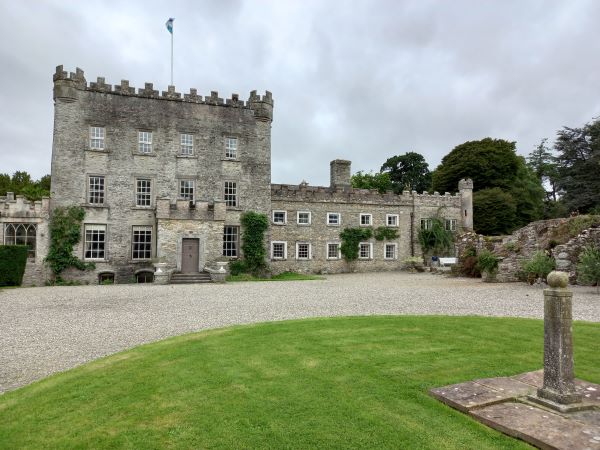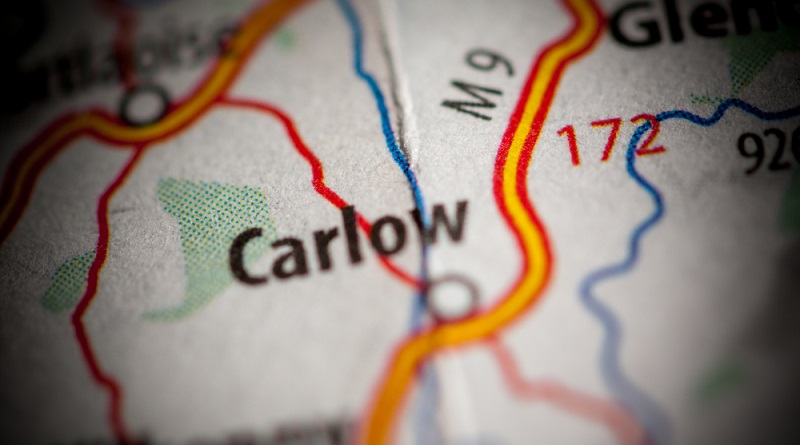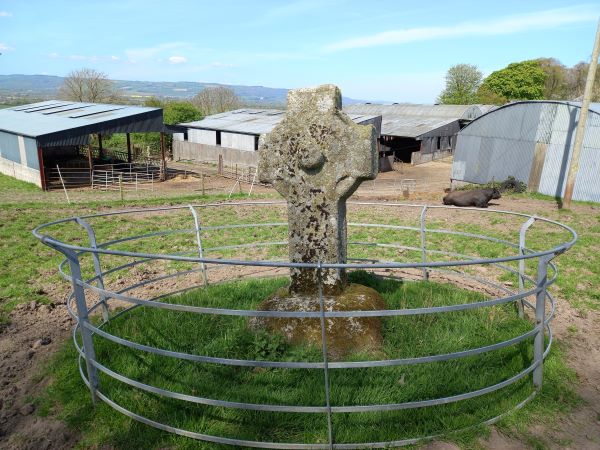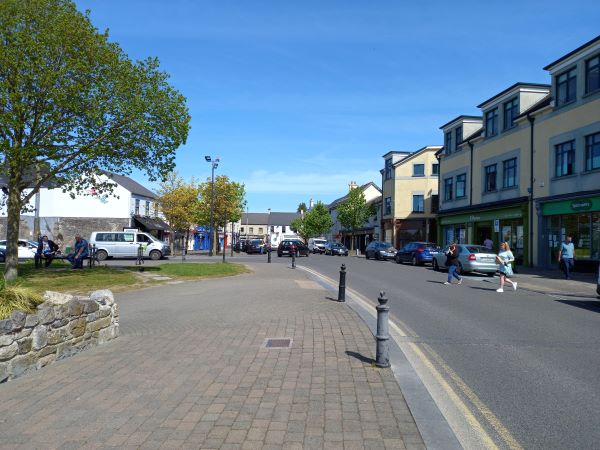Altamont Gardens
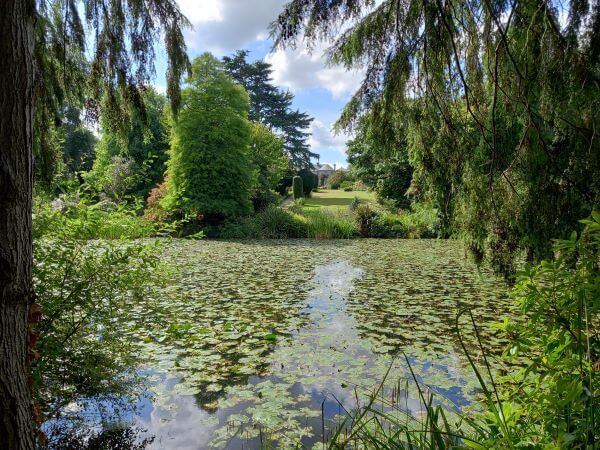
The 40-acre Altamont Gardens is a mixture of formal and informal gardens full of mature trees and shrubs, a two-and-a-half acre scenic ornamental lake, a plant nursery and one of the finest snowdrop collections in Ireland. This beautiful space is also home to every bird imaginable - even peacocks!
The gardens have wonderful views of the Wicklow and Blackstairs mountains.
How to Find It
From Tullow, take the N81 towards Enniscorthy. Turn left when you come to a four-crossroads (signposted Ardattin). Then take the next right (signposted Altamont Gardens). This section of the road is quite narrow and winding and you may have to pull in to make room for cars coming in the opposite direction.
After about 3 km you’ll see a sign for Altamont Gardens pointing to the left. The trip takes about 10 minutes.
The Entrance
The first thing you’ll notice are the impressive, large pillars flanking the entrance. The driveway has lovely, mature, beech trees and manicured lawns on both sides. On the right you can see farm animals in the field just over a fence.
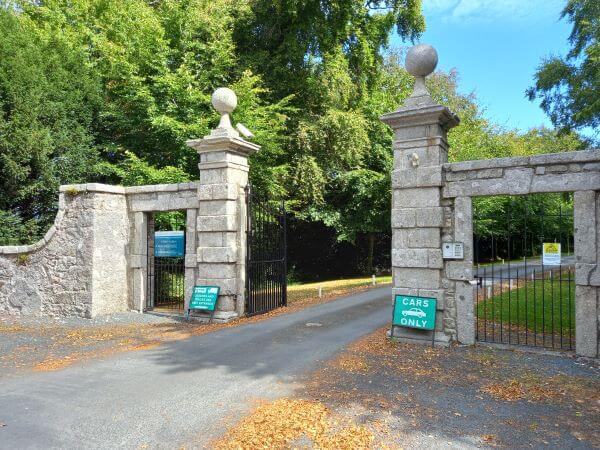
Halfway up the driveway after a gentle incline and a curl to the right, you’ll see Altamont House. Drive past the house and you’ll come to a small T-junction - turn right here and this brings you in to the car park.
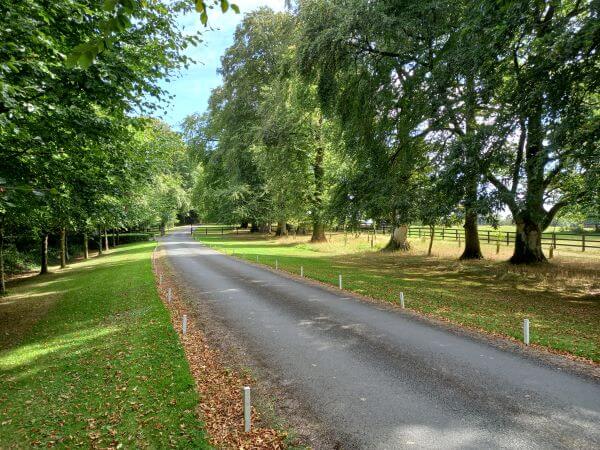
Here you’ll find information signs, picnic tables and toilets.
The Office of Public Works (OPW) (which manages the property) charges €2 per visit to the estate. You can get a ticket from one of the machines in the car park and place it inside your car on the dashboard, so that it’s clearly visible.
When you’re ready to leave Altamont, you drive out of the car park via a different way you came in - don’t worry, there’s some signs pointing towards the exit.
The House
After you’ve paid for your ticket, walk back and have a look at the front of the house. There’s a small plaque on one of the gables displaying the year 1871. However, the house is believed to have been built in 1740 on the site of a convent and before that in the 1600s there was a farmhouse here.
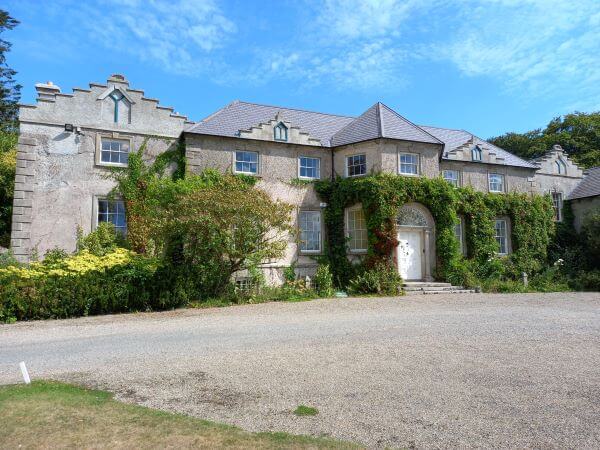
The estate was originally called Rose Hill then Soho and became known as Altamont in around 1760. Back then it consisted mostly of woodland until the 19th century when the Dawson-Bovia family purchased it and designed the current layout.
In 1923, the Lecky-Watson family moved in and when their daughter Corona North inherited it, she developed the gardens, opening them to the public. Corona passed away in 1999 and bequeathed the house and garden to the nation.
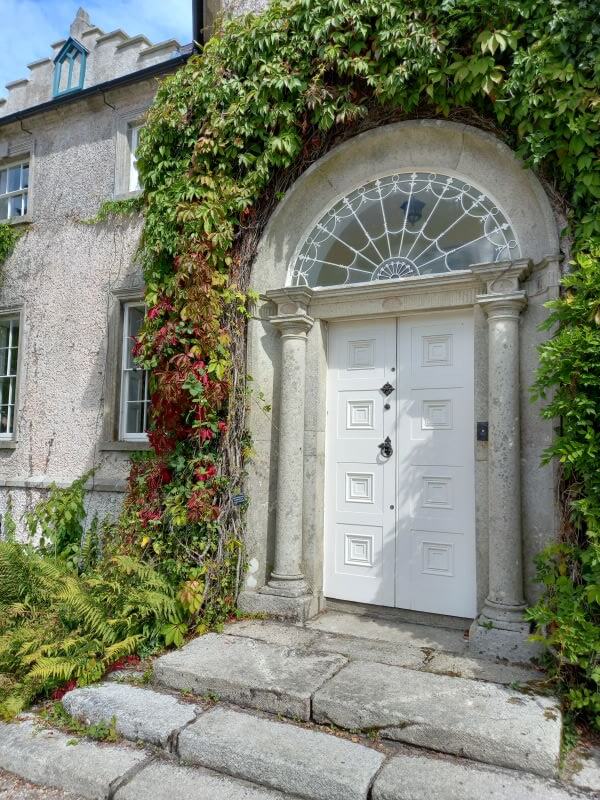
Exploring the Gardens Behind the House
Basically the estate can be divided in to five parts: the gardens behind the house, the lake walk, the woodland and river walk, the temple walk and the walled garden which contains the plant nursery.
There’s different routes you can take but this is my favourite and it ensures you see as much of Altamont as possible.
When you’re ready to begin your walk, come back to the little T-junction and turn left. This will bring you into a small, gravelled yard where you’ll notice a plan of the garden on your right.
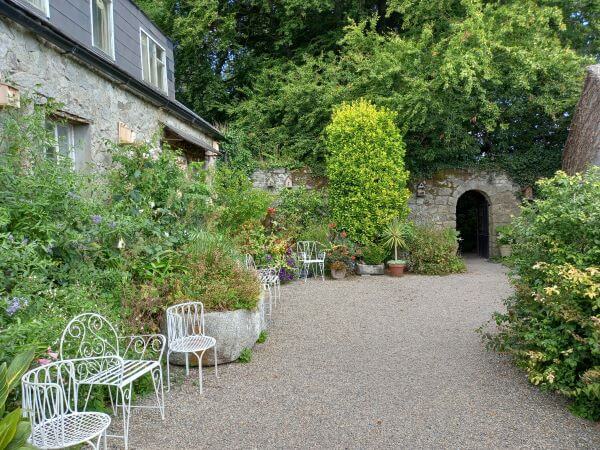
Go through the stone arch and grab one of the information leaflets that are here. Continue straight and on your left you’ll see tall, mature beech trees with bird houses attached to them and laurel hedging on the right. This part of Altamont is called Nun’s Walk - taking its name from the 18th century convent.
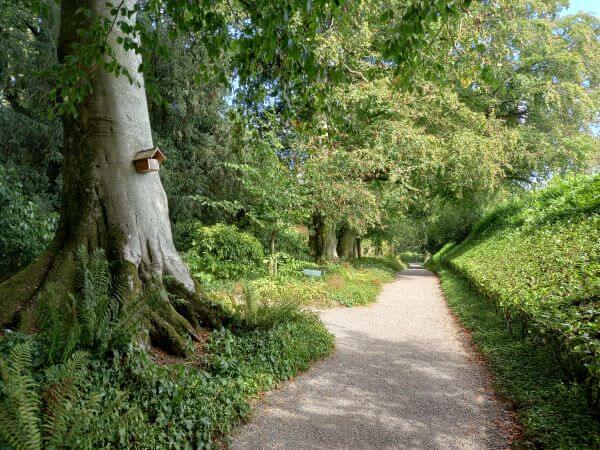
Now take the second left (signposted Main Gardens, Lake Glen and River Walk). This winding, gravelled, narrow path leads you to the rear of the house.
Unfortunately, as of Summer 2022 you can’t go into the house (as it’s being renovated) but there are plans to open it up to the public in the near future.

Now take a right down the wider Broad Walk where there’s box hedging and lovely manicured, sloping lawns on both sides. Here you’ll see old rose beds with the likes of Hybrid Tea Rose Alexander, Rosa “Polar Star”, Rosa “Iceberg”, Rosa “Fragrant Cloud”, Rosa “Prosperity”, Rosa “Deep Secret”, Rosa “Agnes” and Rosa “Remember Me”.
From here, you’ll catch a lovely view of the lake in the distance and you might even begin to hear the sound of ducks quacking. When you reach the sundial, turn right. The lake is on your left and there are nice little places to sit and look out at the water.
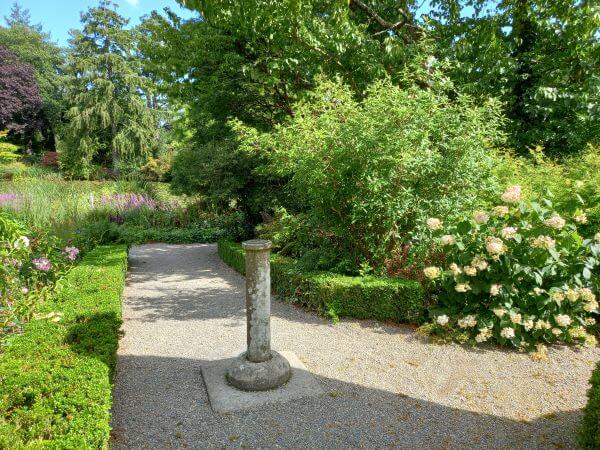
The Lake Walk
The lake (which was excavated just after the Great Famine) is more of a large pond than a lake but is still a really gorgeous place to spend some time.
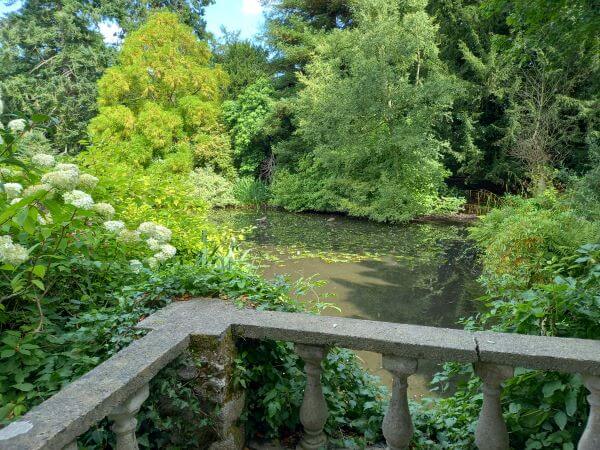
There’s lots of scenic places to pause along the way, whether it’s a bench or a secluded spot under some vegetation. A good place to stop and enjoy the view and the ducks is the stone bridge beside the granite sculpture of a seat.

The edge of the lake is lined with trees such as Evergreen Oak, Douglas Fir, Western Hemlock, Chinese Dogwood, Persian Ironwood and Chinese Magnolia. Be careful not to hit your head on some of the low-hanging boughs!

There’s also shrubs like Rhododendron “Corona” (Corona North was named by her father after this flower) and Rhododendron Triflorum.
Children will love this walk because of the ducks on the banks but make sure to hold their hand just in case they get too adventurous!
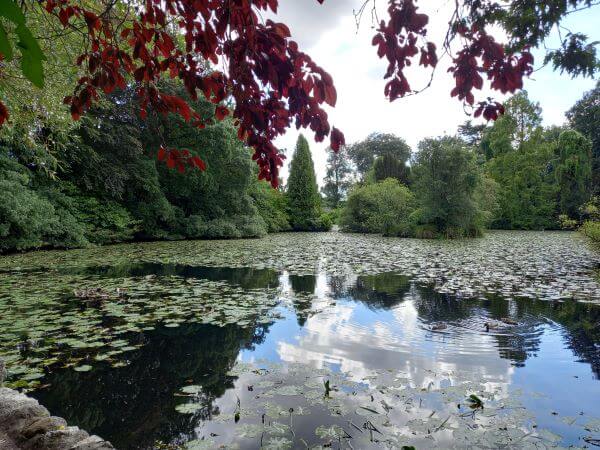
The Woodland and River Walk
This part of the estate is not wheelchair accessible as the terrain is quite rugged in places.
You can access the Lower Glen, Bog Garden and River Walk (also known as the Woodland and River Walk) at a point on the Lake Walk where water flows out of the lake creating a small waterfall. For the most part, you’ll be following this little stream which will eventually curl down in to the Slaney.
First you’ll come to the Wildflower Garden which is on your left with its lovely Pink Pagoda and Brilliantissimum trees. It’s so peaceful along here and all you’ll hear is the sound of birds singing.
Continuing
along the winding track you’ll have to watch your step - luckily
there’s handrails in many places! Crossing over little bridges, passing
sycamores and Prince Albert’s yews you might even catch a glimpse of a
squirrel.

Next you’ll come to the Bog Garden (Wildlife Habitat) and upon entering, have a look at the very unusual stone sculpture to your right. This garden is a lovely open space with few trees and plenty of seats to rest and while away the time.
Don’t forget to check out the miniature dolmen beside the evergreen tree!
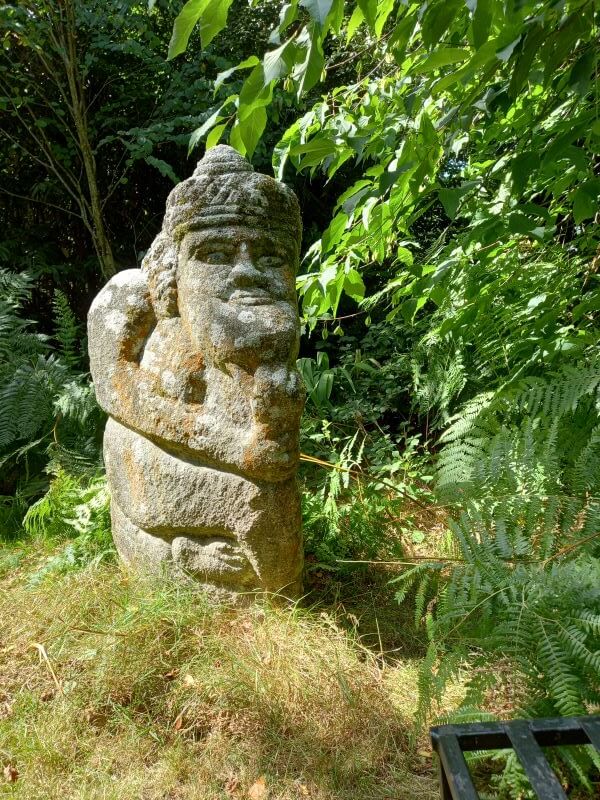 Sculpture in the Bog Garden
Sculpture in the Bog GardenWhen you leave the Bog Garden and come back onto the path, now begins a stretch that you’ll absolutely love with its fast-moving, crystal-clear stream, stepping-stones and amazing rock formations. This section of the wood is visually striking and is my own personal favourite part of Altamont.
Looking to your left you’ll see the River Slaney below in the distance. Continue down the track until you come to its grassy bank. This is a lovely, peaceful and relaxing area to watch the water passing by.
The river is nearly silent as it flows along and the only sound it makes is when it reaches a row of small rocks that stretch across its width.
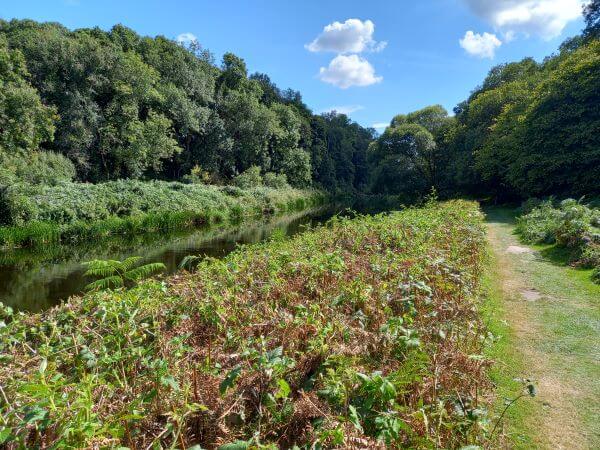
Soon there’s a turn to the right and this is where the 100 steps begin. The steps are long granite stones laid in place and are just wide enough for one person. This is a fairly steep climb so make sure to use the handrail for support.
The path twists and turns making an interesting ascent with great views of the river below. There’s a few benches sprinkled along the way up so feel free to take a break and catch your breath!
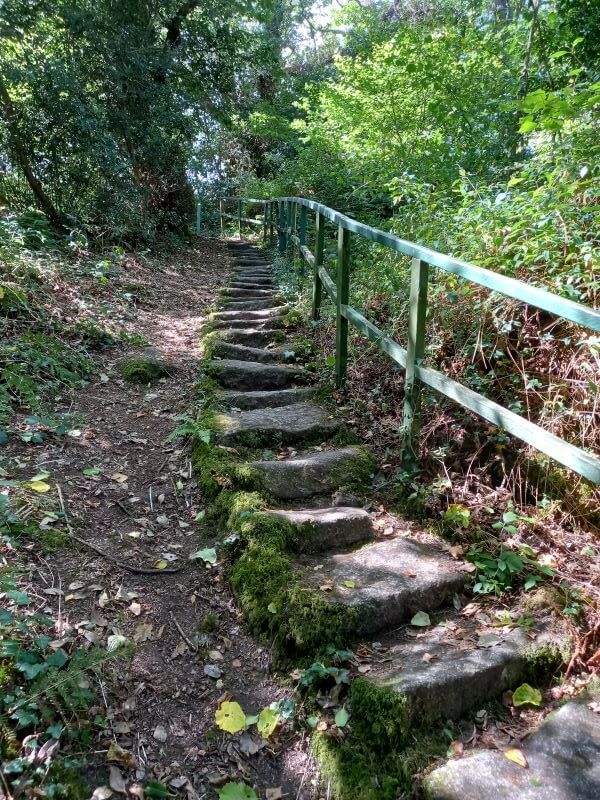
The Temple Walk
You’ll eventually come to a spot where if you take a left you can get back to the Lake Walk via the Temple of the Four Winds or if you continue straight on you come back to the Lake Walk via the Bog Garden.
On the day I visited, I took the temple route. The neatly mown path (through Sunset Field) brings you gently upwards with its lovely, black, metal railings on both sides. Because you’re up on a bit of a height, there’s a fantastic view all around but especially if you look behind you back towards the wood.
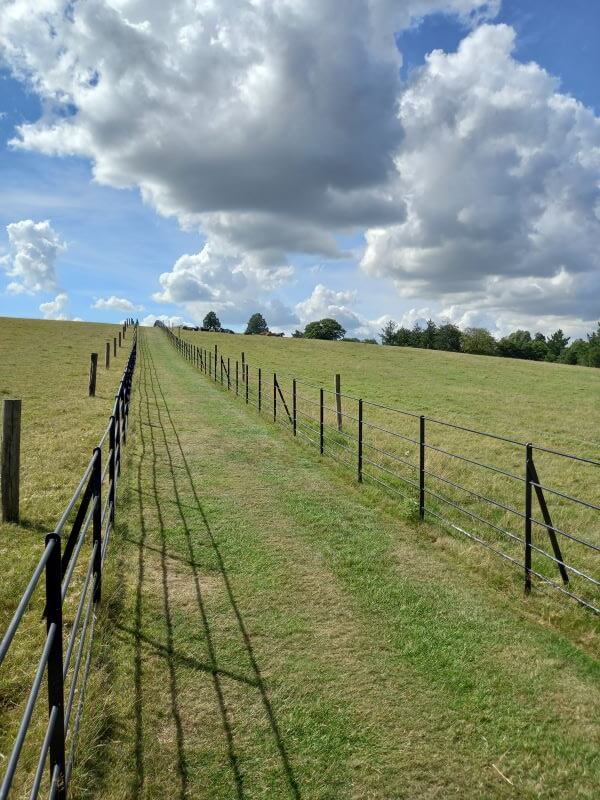
The Temple - which was erected in the 1990s, has six columns supporting a domed roof. Small balustrades (which you can sit on) separate some of columns. You can walk all around the temple and through it from either side.
Take a few minutes to sit here for a while and enjoy the peace and the scenery. When you’re ready to continue, the path travels slightly downhill bringing you towards the Lake Walk.
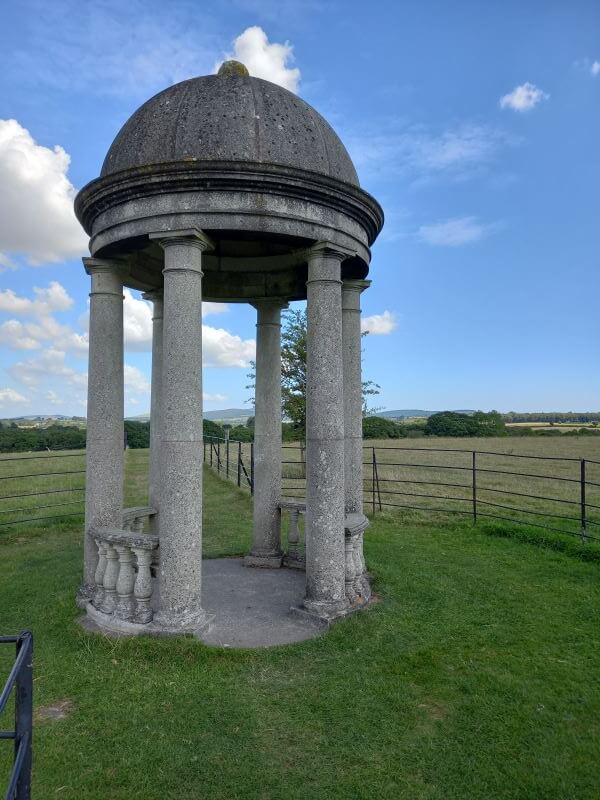
Come off the Lake Walk at Nun’s Walk and head up towards the Walled Garden.
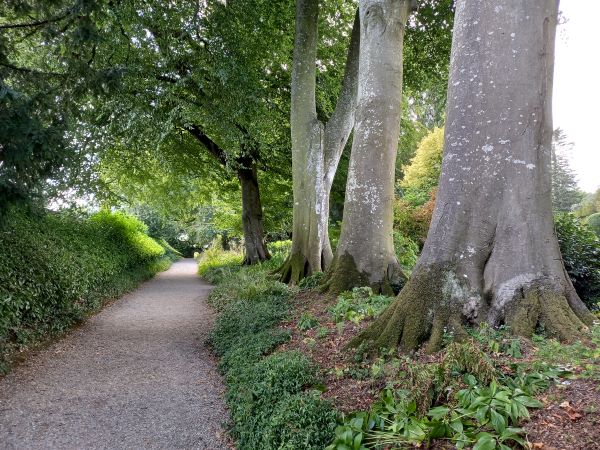 View of Nun’s Walk looking up towards the entrance to the Walled Garden
View of Nun’s Walk looking up towards the entrance to the Walled Garden
The Walled Garden and Plant Nursery
At the top of Nun’s Walk, turn left in to the Walled Garden and Plant Sales. The plant sales is situated within the walled garden and is run by horticulturalist Robert Miller.
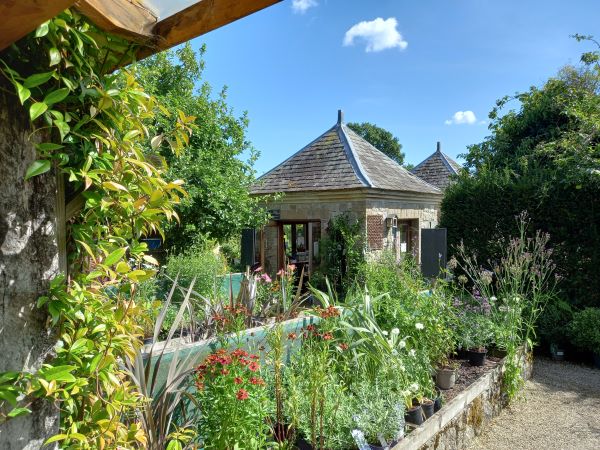
I spoke with Robert and he told me that they try to be slightly different than your conventional garden centre. The plant sales area doesn’t look commercial - it’s in the walled garden of an estate and lends itself to the ethos of the gardens. You still feel you’re in a garden even though you’re in a plant nursery.
They try to sell what’s mainly growing on the estate. So, if you’re walking around the garden and see a plant that you like (luckily a lot of plants in the gardens are labelled) then there’s a good chance it’s available in the plant nursery.
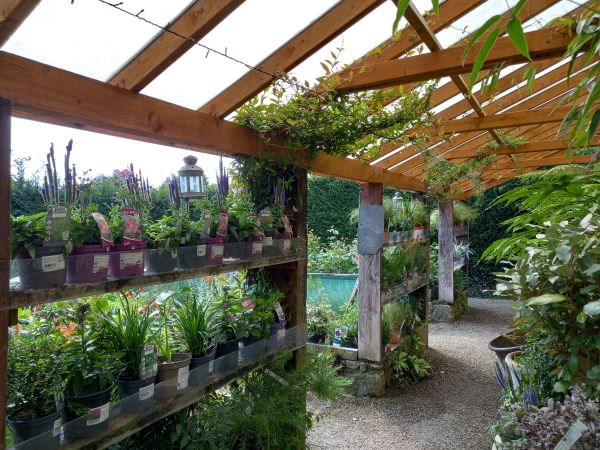
You can buy rare specimens of trees and shrubs with some of the more unusual ones being brought in from all over England and Ireland. During January and February, their biggest seller is snowdrops which they grow themselves.
Apart from plants they sell all sizes of pots (old and contemporary) and some antique furniture. You can also buy really good quality compost that they use themselves. It’s a little bit more expensive that your conventional compost because it’s such a good composition and is specifically formulated with slow release nutrients.
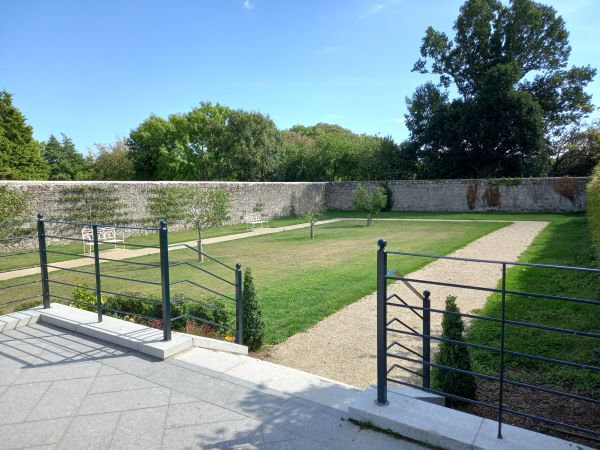 A new space behind the Plant Sales
A new space behind the Plant SalesIt was late August when I visited and Altamont is a gorgeous place to be. It has an incredible calmness and a couple of hours here will do wonders for body and mind.
It’s also an ideal place for a spot of photography and you can even get some great ideas for your own garden.
When you exit the estate you’ll come to the road. Turning right will take you back the way you came (towards Tullow). But if you decide to turn left this will bring you to a four-crossroads where taking a right will bring you towards Carlow town.
Altamont Gardens - Location, Hours & Contact
Location: Altamont, Tullow, County Carlow, R93 N882.
Hours: Open all year. (Excepting severe weather events. Please telephone before visiting).
Contact: 059 91 59444.
- Home
- Carlow Gardens and Woodland
- Altamont Gardens


